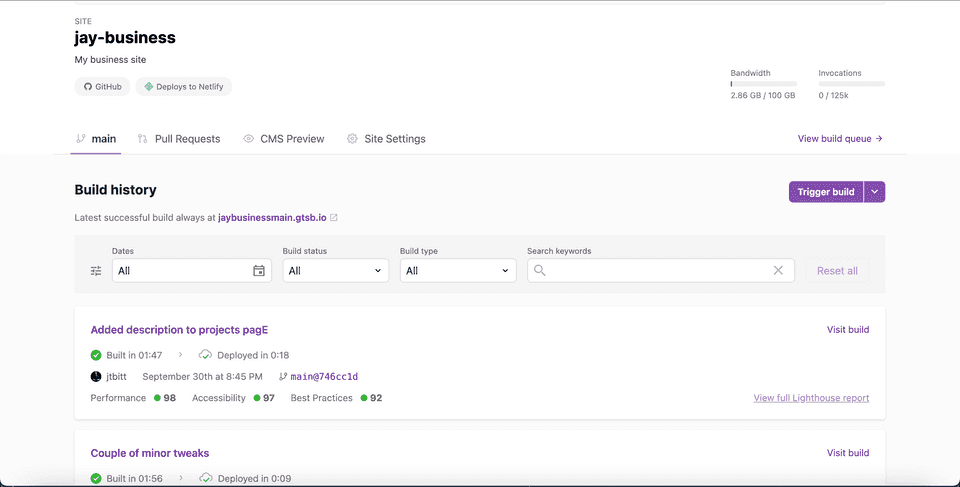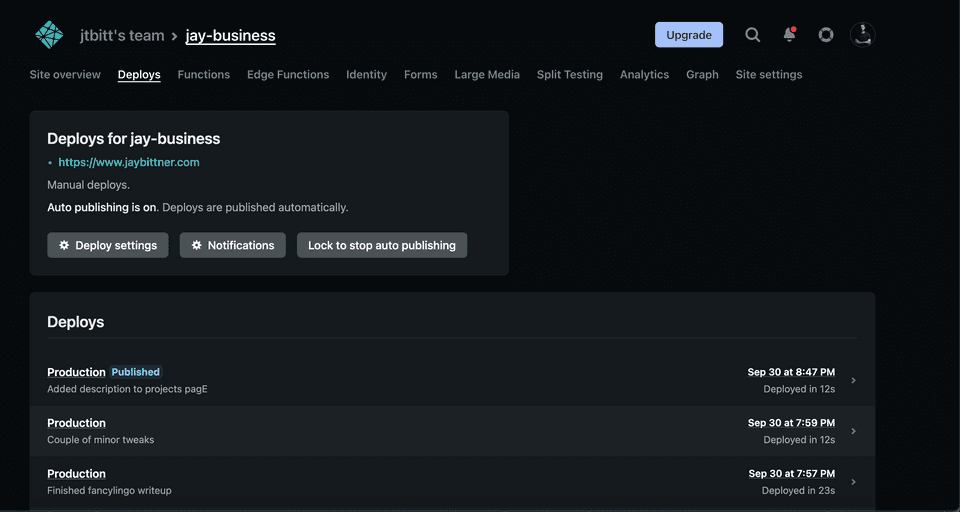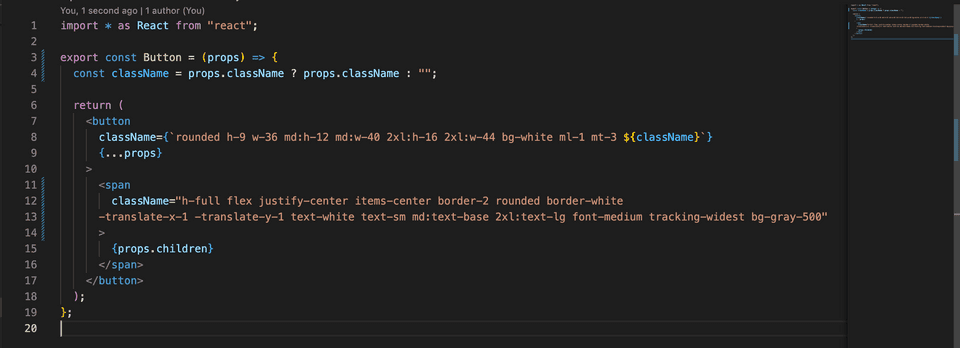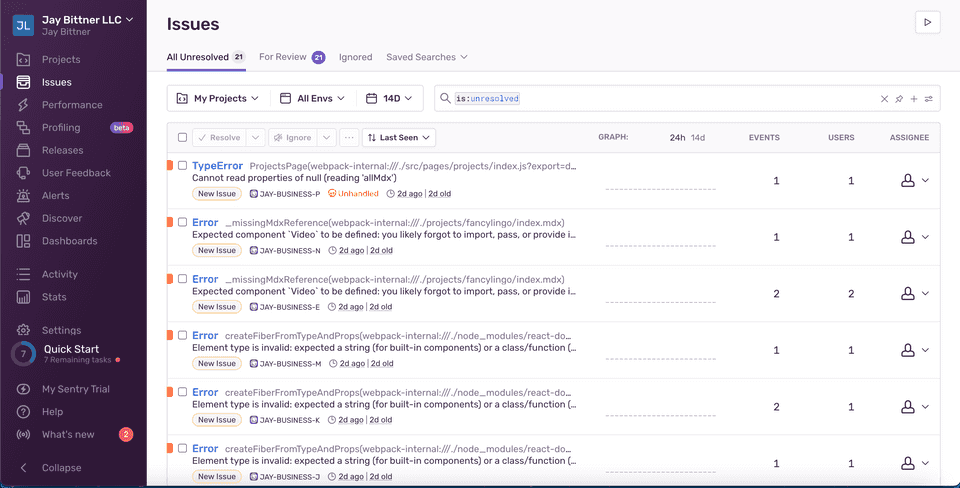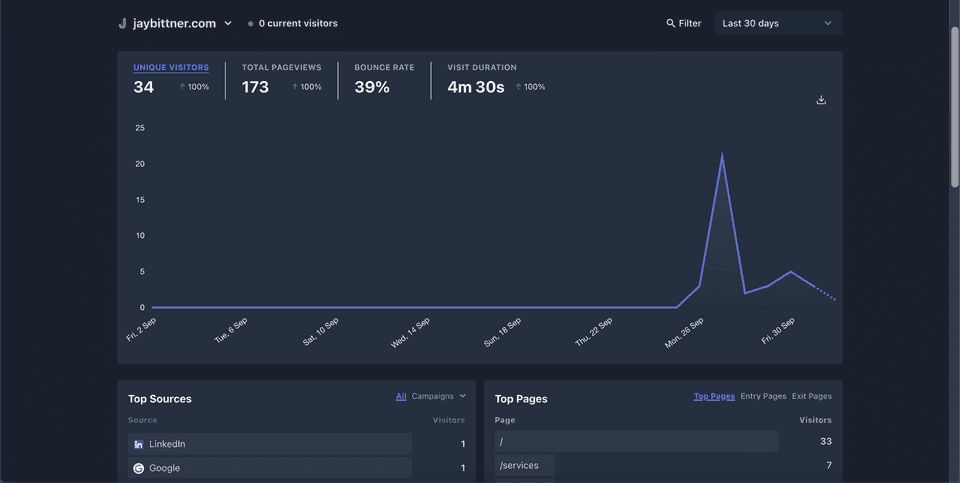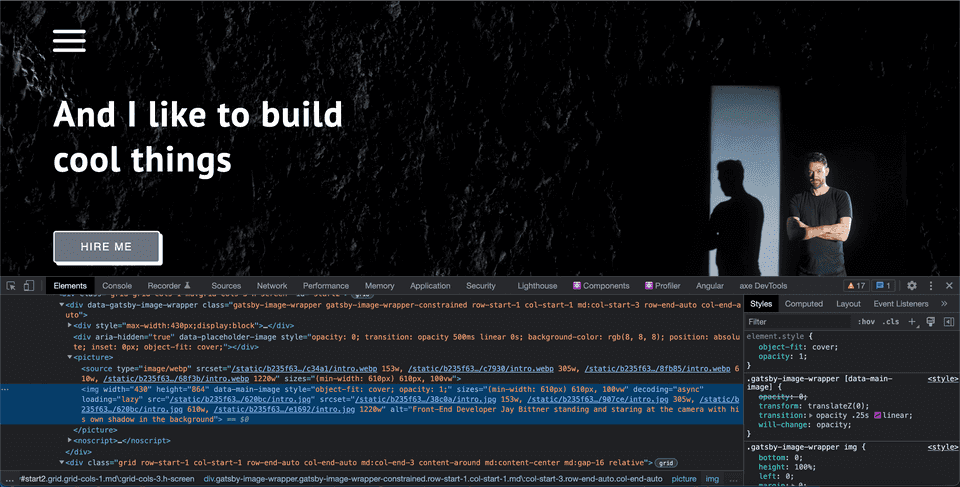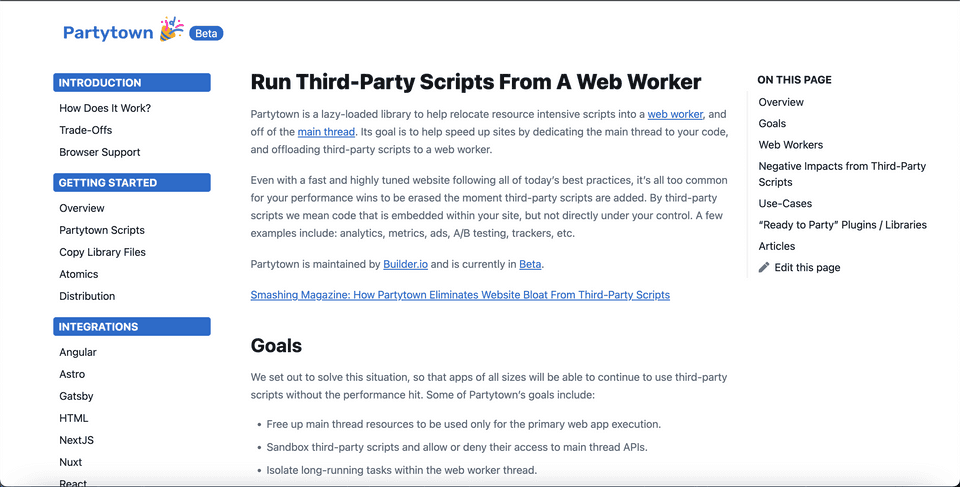October 02, 2022
How I built an amazingly high-speed static website using Gatsby
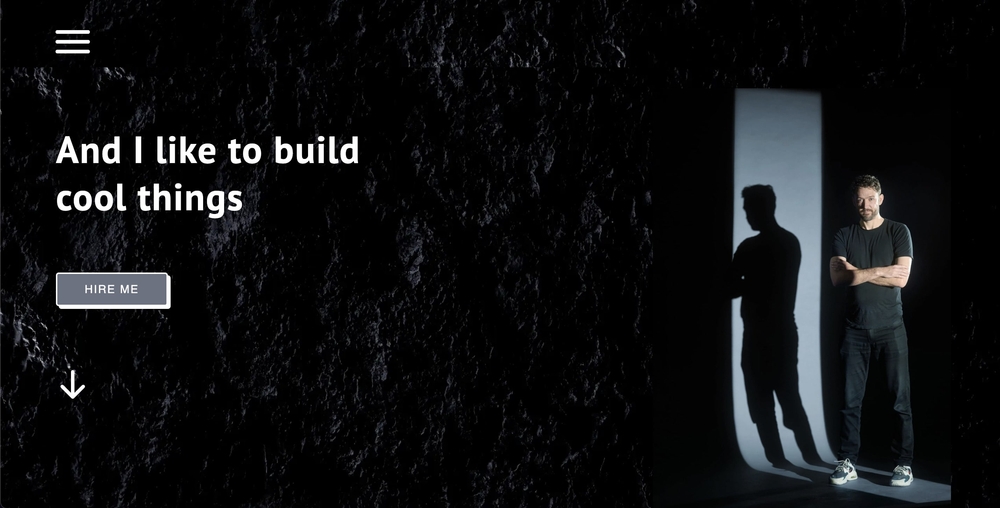
Design Credit: Mafer Contreras
Github: My Site
My focus on coding has been relatively high for quite some time. However, I haven't had an active site for at least a couple of years, leaving something to be desired regarding my overall satisfaction with myself. I've been grinding for a while with my work and other life stuff, and not surprisingly, I've neglected certain parts of my life. If I'm trying to get my face out there to customers and other like-minded individuals, it's a massive waste for me not to have myself out there on the internet. That's why I decided to build out a new website.
For this project to be worth the effort of building, the design needed to stand out, look unique, and have a style that represented what I liked. I'm really into black and prefer an edgier, dark style, so I was aiming for something in that direction. Design isn't my biggest strength, so I asked my girlfriend, Mafer, to help put this idea together. She does UX Research for her current job, so we spent a lot of time researching the ideal customers that I would be after and formulating a design strategy from there. Once we had figured out all the critical answers, she put together an excellent design for me to build off of.
Once the design wheels were set in motion and taken care of, I needed to get the code going. React and Angular are great tools, but they aren't optimal for building fast, static websites that render a lot of HTML content on the initial page load. You can optimize these tools by implementing different rendering strategies, but it makes a lot more sense to just use tools that are specifically built for high performance, so I looked heavily into Gatsby and Next.js, which still utilize React but in a very effective way for speed and SEO. After some deliberation, I went for Gatsby as I've been interested in it for quite a while and dug all the built-in tools they have set up. They also have an excellent build platform that is very fast and helpful during the build process.
I also decided to use Netlify to host the actual site because they have a great reputation and some unique tools like backend analytics and great forms that aren't available on Gatsby hosting. They also have CDN capabilities that serve your site to the customer as fast as possible, no matter where they are in the world.
I started this project like any other, first looking at the design and deciding how I wanted to break everything up. I usually break up global components, API, etc., into their own folder and then have module folders for each application section. I keep anything only used by one module in the module folder rather than the global one. In the case of Gatsby, pages are generated automatically by being in the /pages folder specifically. I played around with putting components into this, but it went against the Gatsby page generator setup. So for this project, I put all hooks, components, etc., inside a global folder with corresponding sub-folders based on the page (ex./home). I created all the pages inside the pages folder.
Once the rough structure was decided, I started building out the skeleton of the project. Since I really wanted a lot of structure and clean implementation, I spent a lot of time breaking up my code into small specific components, hooks, etc., to make it as maintainable and organized as possible, even as the project grows.
I also decided to go with TailwindCSS to do all the CSS, as it eliminates a lot of rogue CSS classes and stylesheets that get annoying and add loading time. It's much easier to use utility classes you can put directly in HTML with media query capability to put everything together. Even if someone has never seen your code, they can easily understand the CSS because Tailwind standardizes it.
I started putting things together, slowly polishing up the look, creating copy to support my call to action, which is to sell my various coding services. Everything in my design is based on drawing interest and giving customers actionable things they can do to use my services. The user is given several buttons on the landing page, all of which take them to the services page, where more specific information, prices, and frequently asked questions are addressed. If the user wants to become a customer, clicking on any service buttons opens a Calendly modal where they can schedule a call with me. I have a few questions the user needs to answer to filter for motivated customers.
If the user gets to the bottom of the landing page without following the call to action, I give them the option to set up a Calendly meeting with me, contact me by email, or check out my coding services. The contact form requires the same questions to be answered as setting up a Calendly meeting. I'm OK with only some customers getting through the filter because I want serious customers. The contact form gives the customer another option in case they don't want to make a call. I have some configuration on the state to derail bots and other spam.
As I was wrapping up the website, I knew I wanted to set up some 3rd party scripts to monitor my website activity. In my professional career, using monitoring tools to help track errors whenever they happen to the end user is an effective way to lower debug time and point out some red flags. Anything I can do to minimize the time fixing bugs is a considerable value. I decided to add Sentry because it has a free tier, and it's been beneficial for me in the past.
On top of Sentry, I wanted to add some type of analytics to track my actual users. Since my site has a specific call to action that needs to happen, I thought being able to see how my users interact with the site was necessary. I decided to create a Hotjar account, so I could watch videos to see where my users are going and check heatmaps to see where they click the most. Hotjar does lower my website performance score, so I will activate/deactivate it at different points depending on when I want information. For now, I have it deactivated.
To keep some standard, no-bullshit analytics, I also wanted to implement something for that. Google Analytics is free and very effective, but I felt it was overkill for several reasons for my small business site. First, it is a heavy script and significantly lowers performance scores. The other thing was that it's not GDPR compliant, so you're forced to legally show different privacy popups to your users, which kills the vibe.
I decided to go with an independent GDPR-compliant analytics company called Plausible Analytics which follows users on the client side code. I'm currently on the trial version, but it seems like a no-bullshit platform, which I like. I also have the option to use Netlify server-side analytics since I'm hosting with them, which would give me a different angle, but I decided to hold off on adding more analytics until I'm doing the more important thing, which is getting a lot of users on my website.
I did my best to follow Gatsby's best practices and implement unique SEO for all pages of my website. I'm admittedly not very experienced doing SEO, so this is a running experiment. Utilizing sites like ahrefs for SEO analysis and Google Lighthouse to make sure there aren't any leaks that would lower my site's performance; it's going to be something that improves progressively over time. Also, traffic should slowly tick up as I link my content to various sites, talk on social media, and develop my blog.
And with all the configuration set up, that led me to the last thing I needed: speed optimization. Typically the biggest speed killer is images. Most From what I've seen, people do not compress and optimize their images enough. Compressing images and converting them into modern formats like WebP can cut a ridiculous amount of loading time. Along with those things, adding lazy loading, not loading an image until your scroll is near to it on the page, minimizes the number of images that even need to be loaded initially. Gatsby has a killer plugin that optimizes your images, converts them into modern formats like WebP, and implements lazy loading. It also creates backups in jpg or png if the user's browser can't use WebP. Anyone who spends time trying to minimize loading times knows how essential these types of processors are.
Along with optimizing images, which I would say is the biggest time saver, it was vital to minimize the amount of Javascript being run on page load. I've been on sites where so many API calls and processes are immediately being run that it kills loading speed. Getting a page to the user as fast as possible is essential. Other than making a GraphQL query to grab my initial home page images and to use a Javascript function to re-structure their objects, I avoided making any different initial Javascript calls on the home page.
With the optimized images and minimal Javascript, my app's performance was 100 on Google Lighthouse, which is the best score you can get. I was really stoked and pleased with myself. Unfortunately, 3rd party scripts that put things in, like code tracking and analytics, can slow things down. After I added the Sentry, Plausible, and Hotjar scripts to my project, my website's score went from 100 to 94, which was a bummer. I dug in for solutions. The Plausible script is minimal and meant to be fast, so this wasn't affecting the score. I was accidentally implementing a very heavy Sentry script, so Instead, I implemented a very minimal script, which increased my score significantly. Unfortunately, Hotjar has no lightweight script, so it still had my score at around 96 by itself.
Gatsby recently set up a Script API that allows you to load your 3rd party scripts differently. The options are after-page hydration, whenever the main thread is idle, or by using a new cutting-edge library called Partytown that runs the script separately from your application in a service worker, so it doesn't load in the same place as the rest of the code. The default option of post-hydration worked for Sentry and Plausible, but unfortunately, with Hotjar, neither of the first 2 options worked. It was still messing up the performance score, even with those optimizations. I decided to play around with Partytown to see if I could make some magic happen.
After grinding away for several hours, I got things configured to load the Hotjar script separately and get my score back to 100. However, because Partytown is still experimental, it was still error-prone and not working 100% of the time. Since breaking the website for any user is too big of a risk, using Partytown doesn't make sense to me until it evolves. I decided to disable Hotjar for now but will re-enable it for specific stretches of user tracking when I need it. With Hotjar disabled, my website performance is sitting at 100, and my other website markets are also great. Because of my background color and font color combination, I don't have a perfect accessibility score, but I'm not willing to change that for a perfect score. All other accessibility is excellent, screen-reader-wise.
My website is very new and still in the beginning stages. However, now that it's built out, my work on it going forward will primarily be developing project analysis like this, creating exciting blog content, and further developing my SEO. Outside of the site, I need to get customers to my website, and as I get more and more happy customers, I'll add more testimonials and examples of the work I've done for them. Nothing is more important to me than a satisfied customer so I'll keep going hard in the paint on that angle.

